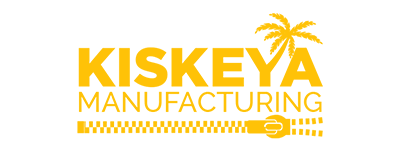Lung hypertension is a complex condit uromexil forte apothekeion that affects the capillary in the lungs, bring about raised pressure as well as strain on the heart. In its end stage, pulmonary hypertension can have extreme and dangerous signs. Comprehending these signs and symptoms is critical for clients, caretakers, and health care professionals to give ideal treatment as well as support. This write-up aims to check out the signs of end phase lung high blood pressure carefully.
1. Breathing Signs
Clients with end phase pulmonary hypertension frequently experience numerous respiratory signs, which can significantly impact their quality of life. These signs and symptoms might include:
- Shortness of breath: Clients might experience shortness of breath even at rest, making it hard to execute daily activities.
- Serious cough: A relentless and also unrelenting coughing might exist as a result of fluid accumulation in the lungs.
- Hissing as well as upper body tightness: Restricted air flow can result in hissing sounds and a sensation of tightness in the breast.
- Rapid breathing: Clients might show quick or superficial breathing patterns as the body attempts to make up for the minimized oxygen levels.
These respiratory system symptoms can progressively worsen in time as well as considerably effect the patient’s capability to work typically.
2. Exhaustion and also Weak point
End phase lung hypertension often causes extreme tiredness and also weakness. Individuals might locate it testing to execute even straightforward tasks due to the strain on their heart and lungs. The reduced oxygen levels in the blood can even more contribute to feelings of exhaustion as well as weak point throughout the body.
As exhaustion sets in, people may additionally experience a decline in their overall endurance and physical endurance. This can lead to lowered flexibility and a greater dependence on help from others.
3. Cyanosis
Cyanosis, a blue staining of the skin and mucous membrane layers, is an usual sign of end stage pulmonary high blood pressure. It takes place because of insufficient oxygenation of the blood. Patients may see a blue shade specifically on their lips, fingertips, and toes.
Cyanosis is a significant indicator that the body is not getting enough oxygen, as well as it needs to be dealt with quickly by a health care professional. It diaform÷ frequently shows a critical point of the illness and also the requirement for urgent clinical treatment.
4. Swelling and also Fluid Retention
End phase lung high blood pressure can create liquid retention and also swelling, called edema. This normally happens in the legs, ankles, and feet, however can also encompass the abdominal area and various other locations of the body. The accumulation of liquid is an outcome of raised pressure in the lung capillary, which can result in leakage right into the surrounding tissues.
Edema can be uncomfortable as well as restrict movement, creating troubles in strolling or wearing footwear. It may additionally be accompanied by weight gain as well as a feeling of bloating.
5. Raised Heart Rate
As the heart works harder to pump blood against raised resistance, patients with end phase pulmonary high blood pressure may experience a raised heart rate, referred to as tachycardia. This quick heartbeat is a compensatory mechanism to preserve ample blood flow to the body in spite of the impaired pulmonary circulation.
Tachycardia can create palpitations, a feeling of trembling or battering in the breast, which may be distressing to people. Monitoring heart rate on a regular basis is crucial for handling signs and also changing therapy as necessary.
Final thought
End stage pulmonary hypertension is a challenging problem defined by extreme symptoms that significantly impact a patient’s lifestyle. Identifying these symptoms, such as respiratory system distress, tiredness, cyanosis, swelling, as well as enhanced heart rate, is vital for early discovery, reliable management, and providing proper helpful treatment. Medical care professionals play a crucial function in assisting patients and also their households navigate via the complexities of end phase pulmonary high blood pressure as well as ensuring their health.

